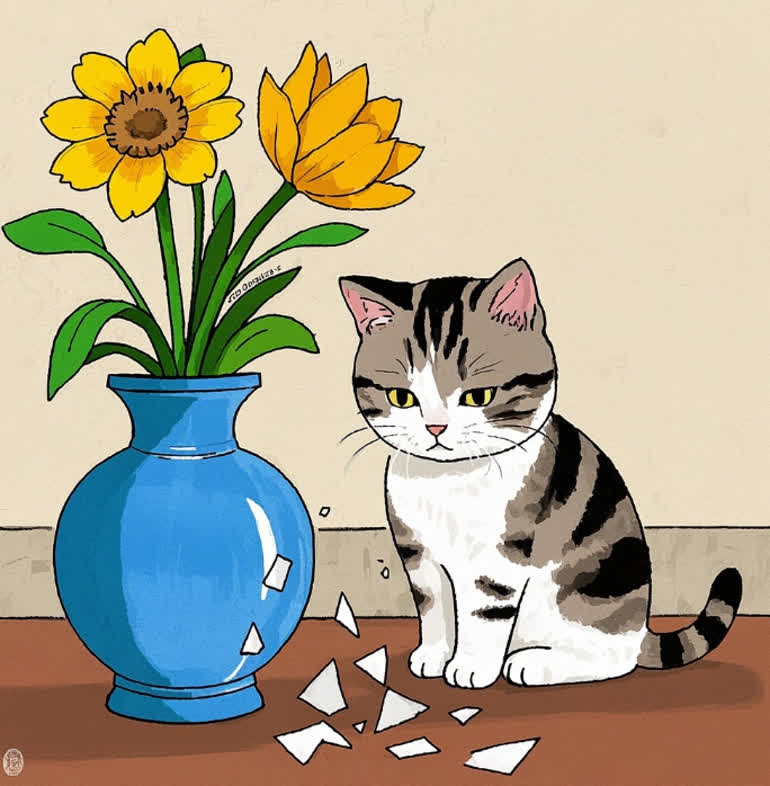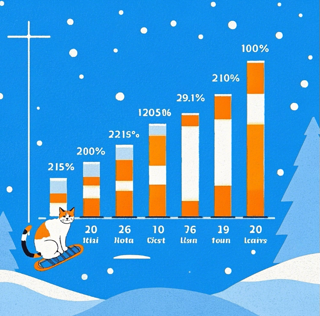If you’ve ever wondered, "Do cats apologize?"—the answer is yes! While they don’t use words, cats communicate remorse through subtle behaviors. In this guide, we’ll decode cat apology signs and show you how to recognize when your feline friend is saying, "I’m sorry."
The Science Behind Feline Apologies
Cats lack human-like guilt but adjust behavior to resolve conflicts. A 2023 study in Animal Cognition found cats reduce aggression post-confrontation using:
Slow Blinking: Conveys relaxation (80% of owners misinterpret this)
Ear Position: Forward ears = calmness; flattened = submission
Tail Language: Gentle swishing signals non-threat
Veterinary Insight: Dr. Karen Sueda notes, "Cats use feline apology body language to de-escalate tension, not out of guilt."
7 Hidden Ways Cats Apologize
1. The Headbutt Truce
A gentle headbutt (bunting) releases calming facial pheromones. When paired with purring after misbehavior, it’s their olive branch.
2. Toy Offerings
Bringing toys or prey is an instinctual sharing behavior. A 2024 survey found 65% of owners receive "apology gifts" after scolding their cats.
3. Lap-Sitting Overdrive
Suddenly demanding cuddles post-misbehavior? Cats use body heat to bond. This is especially common in breeds like Ragdolls.
4. Grooming Gestures
Licking your hand mimics maternal grooming. It’s reserved for trusted individuals—a clear sign of reconciliation.
5. The "I’ll Be Good" Posture
Crouching low with ears forward signals submission. Often followed by tentative approaches to test your reaction.
6. Accidental Rubs
Rubbing against furniture near you while avoiding eye contact is a passive-aggressive apology. They’re marking territory and acknowledging you.
7. Toy Fetching
Pushing a toy toward you combines playfulness and apology. Breeds like American Shorthairs use this due to their problem-solving instincts.
Breed-Specific Apology Styles
Siamese: Chirp while rubbing legs
Persians: Bring grooming tools as peace offerings
Bengals: Redirect tension into high-energy play
Behaviorist Tip: Dr. John Bradshaw 建议,"Observe your cat’s unique habits—individual personalities matter more than breed."
How to Respond to Your Cat’s Apology
Turn conflict into connection:
Stay Calm: Relax your posture and lower your voice
Reward the Behavior: Offer freeze-dried chicken treats
Play Together: Use a feather wand to release energy
Gentle Petting: Scratch behind the ears to reinforce trust
Common Misconceptions
❌ Punishing after an apology undoes their effort
❌ Forcing interaction can increase stress
❌ Ignoring signals prolongs conflict
Case Study: When Whiskers Broke the Vase
A 3-year-old American Shorthair:
Brought her toy to the owner
Sat on broken pieces and purred
Allowed extra grooming
Outcome: Behavior improved after positive reinforcement.
FAQs
Q: Do cats apologize for peeing outside the litter box?
A: Yes, but rule out medical issues first.
A: Yes, but rule out medical issues first.
Q: Can kittens apologize?
A: Kittens under 6 months mimic behaviors but lack full emotional understanding.
A: Kittens under 6 months mimic behaviors but lack full emotional understanding.
Q: How long do cat apologies last?
A: Most resolve within 24 hours with proper response.
A: Most resolve within 24 hours with proper response.
Conclusion
Understanding cat apology signs transforms frustrating moments into bonding opportunities. By recognizing their unique language, you’ll strengthen trust and create a happier home. Remember—every headbutt and toy offering is your cat’s way of saying, "Let’s make up."
Understanding cat apology signs transforms frustrating moments into bonding opportunities. By recognizing their unique language, you’ll strengthen trust and create a happier home. Remember—every headbutt and toy offering is your cat’s way of saying, "Let’s make up."










